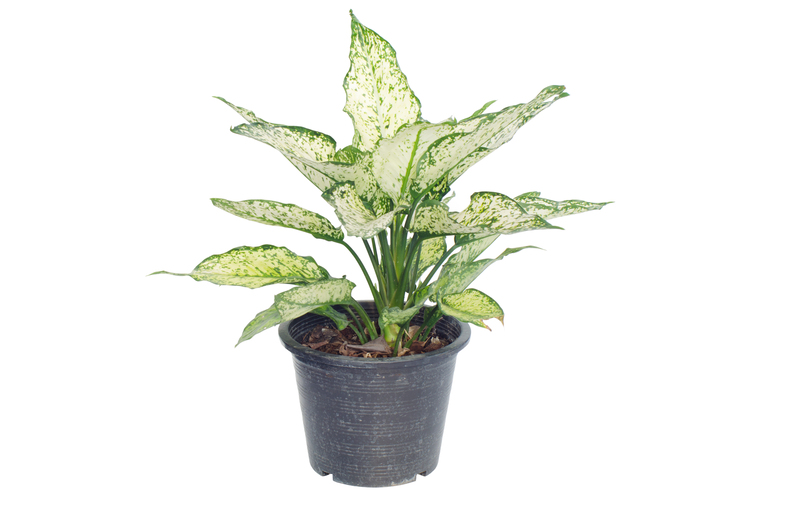Thriving in the Shadows: Evergreen Climbers for Shade
Posted on 16/05/2025
Thriving in the Shadows: Evergreen Climbers for Shade
When it comes to garden design, finding the right plants that can thrive in the shadows is often a challenge. However, the world of gardening offers a myriad of options for those shady corners of your garden. Evergreen climbers are a fantastic choice, offering year-round interest and greenery even in low-light conditions. This article unveils the secrets of growing and maintaining these resilient plants.
The Charm of Evergreen Climbers
Evergreen climbers not only present a solution to shady spots but also add a touch of elegance to any garden. With their lush foliage and sometimes vibrant blooms, these plants can transform the most overlooked areas into focal points. Let's delve into some of the top evergreen climbing plants that thrive in shade.
The Advantages of Evergreen Climbers
- Low Maintenance: Most evergreen climbers are easy to care for, making them perfect for busy gardeners.
- Year-Round Aesthetics: Unlike deciduous plants, evergreen climbers offer continuous foliage, maintaining interest throughout winter months.
- Versatility: These plants can cover walls, fences, or even serve as ground cover, adapting to various garden structures.

Top Evergreen Climbers for Shady Areas
1. Hedera helix (English Ivy)
English Ivy is perhaps the most recognized of all shade-tolerant climbers. Known for its lush, evergreen leaves, it thrives in a variety of conditions, including deep shade. This hardy plant is perfect for covering unsightly walls and can serve as an elegant backdrop for flowering plants.
2. Euonymus fortunei (Wintercreeper)
Wintercreeper is an adaptable climber that provides year-round greenery. Its small, glossy leaves come in various shades, including variegated forms that add visual interest. Not only does it climb, but it also serves as effective ground cover, making it a versatile choice for shady gardens.
3. Trachelospermum jasminoides (Star Jasmine)
Though often associated with sun, Star Jasmine also performs well in shade. It's an excellent choice if you want to introduce a sweet fragrance to your shaded space. With its glossy leaves and starry white flowers, this climber can create a charming garden nook.
4. Lonicera japonica (Japanese Honeysuckle)
Known for its aromatic flowers, Japanese Honeysuckle is a vigorous grower that adapts well to shaded areas. Its long-lasting blooms attract pollinators, adding both beauty and biodiversity to your garden.
Growing and Caring for Evergreen Climbers
The secret to a successful shade-loving garden lies in understanding your plants' needs. While evergreen climbers are generally low-maintenance, providing the right conditions will ensure a healthy and vibrant display.
Light Requirements
While these climbers thrive in shade, it's essential to understand the difference between light and dense shade. Ensure your plants receive indirect sunlight to avoid leggy growth, which can occur if they're too sheltered.
Soil Conditions
- Well-Draining Soil: Ensure your soil isn't waterlogged, as most climbers prefer well-draining conditions to prevent root rot.
- Rich in Organic Matter: Amending the soil with compost can boost nutrient levels, promoting lush growth.
Watering
Regular watering is essential, especially during dry spells. However, allow the soil to dry out slightly between waterings to discourage overwatering, which can harm the plant roots.
Pruning and Maintenance
Regular pruning encourages bushy growth and prevents these climbers from becoming overgrown. It's advisable to prune in late winter or early spring before new growth begins. This is also the best time to check for any pests or diseases that may have developed during the winter months.
Design Tips for Incorporating Evergreen Climbers
Creating a visually appealing garden involves strategic placement and complementary pairings. Here are design tips to make the most of your evergreen climbers:
- Vertical Gardens: Use a trellis or pergola to explore the vertical potential of climbers, adding height and dimension to your garden.
- Mixed Borders: Combine with flowering perennials to create a dynamic landscape. Evergreen climbers provide a lush backdrop that enhances blooms from other plants.
- Container Gardens: If space is limited, many climbers can be grown in large pots. This method allows for creative placement and easy relocation if needed.

Environmental Benefits of Evergreen Climbers
Aside from their aesthetic appeal, evergreen climbers offer significant environmental advantages:
- Habitat for Wildlife: These plants provide shelter and food for various creatures, from birds nesting in the leaves to pollinators visiting the flowers.
- Improved Air Quality: By trapping dust and pollutants, climbers contribute to cleaner air in urban environments.
- Energy Efficiency: When grown on walls, climbers can help insulate buildings, reducing heating and cooling costs.
Conclusion: Embrace the Shadows
Gardening in shady areas offers a unique opportunity to explore a different palette of plants. By choosing the right evergreen climbers, you can create a vibrant and lush haven, even in the shadows. Whether you're looking to cover a fence, adorn a garden wall, or enhance your outdoor living space, these adaptable plants will bring both beauty and ecological benefits to your home.
With careful selection and regular maintenance, evergreen climbers can transform any shady corner into a thriving landscape. Embrace the challenge, and let your garden flourish beneath the canopy.

